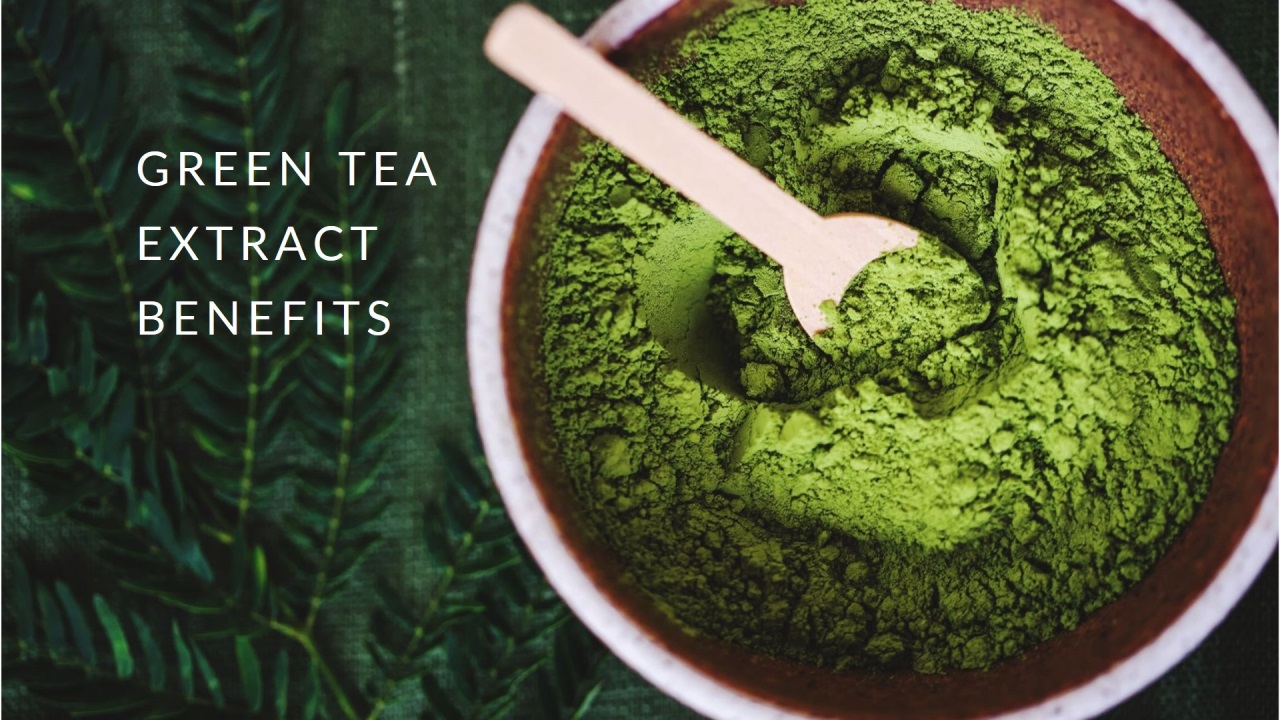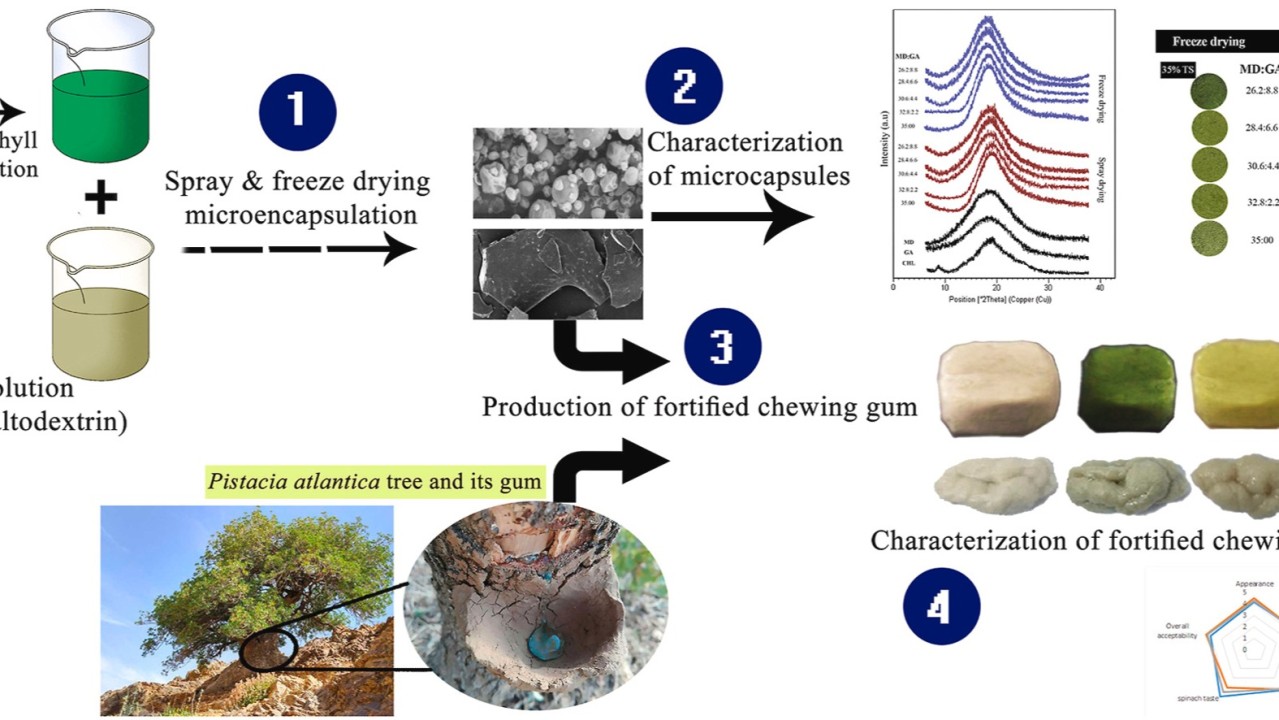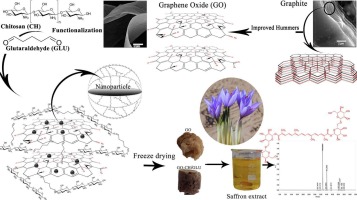1. Introduction
Green tea, derived from the leaves of Camellia sinensis, is one of the most widely consumed beverages globally and is increasingly incorporated into nutraceuticals and functional foods. Its health benefits are largely attributed to its rich chemical composition, particularly polyphenols, which exhibit potent antioxidant, anti-inflammatory, and anti-cancer properties. Catechins, the most significant group of polyphenols, are key active components in green tea extract. Among these, epigallocatechin-3-gallate (EGCG) is the most abundant and biologically active catechin, known for its role in combating oxidative stress, preventing lipid oxidation, and improving food quality and stability.
However, the application of green tea polyphenols (GTPs) in food systems faces challenges due to their low stability and bioavailability. Encapsulation has emerged as a promising strategy to overcome these limitations, ensuring the effective delivery of GTPs while preserving their functional properties.
2. Chemistry and Benefits of Green Tea Extract
Green tea extract is rich in polyphenols, accounting for 25-35% of the dry weight of tea leaves. These polyphenols, primarily catechins, include:
- Epigallocatechin-3-gallate (EGCG): The most potent antioxidant compound.
- Epicatechin gallate (ECG): Known for its strong free-radical scavenging activity.
- Epicatechin (EC) and Epigallocatechin (EGC): Effective antioxidants that contribute to green tea’s bioactive profile.
Catechins owe their antioxidant activity to their hydroxyl groups, which enable free radical scavenging, metal ion chelation, and inhibition of pro-oxidant enzymes. These mechanisms prevent lipid oxidation, a common challenge in food products leading to rancidity, off-flavors, and reduced shelf life.
3. Applications of Green Tea Extract in Food Products
The functional and antioxidant properties of green tea extract have made it a valuable ingredient across various food applications:
- Meat and Poultry Products: Prevents lipid oxidation, improves color stability, and delays the development of warmed-over flavor (WOF).
- Bakery Products: Enhances oxidative stability, maintaining the freshness of bread and biscuits.
- Oils and Fats: Acts as a natural antioxidant to protect vegetable and marine oils from oxidation.
- Beverages: Stabilizes sensitive components like beta-carotene, improving color and nutritional quality.
- Emulsions: Delays lipid oxidation in products like mayonnaise and salad dressings, extending shelf life.
The versatility of green tea extract allows its incorporation in both water-soluble and oil-soluble forms, catering to diverse food systems.
4. Challenges with Green Tea Polyphenols
Despite their health benefits, GTPs face significant challenges:
- Stability Issues: GTPs degrade under exposure to temperature, light, pH, and oxygen during food processing and storage.
- Low Bioavailability: In the gastrointestinal tract, GTPs suffer from poor absorption due to low permeability across membranes and enzymatic degradation, limiting their effectiveness.
5. Encapsulation as a Solution
Encapsulation has been identified as a key strategy to address the instability and low bioavailability of GTPs. By enclosing GTPs within protective matrices, encapsulation shields them from external factors, improves their solubility, and ensures targeted delivery.5.1 Encapsulation Techniques
Encapsulation systems for GTPs can be categorized into emulsion-based and particle-based approaches:
- Emulsion-Based Systems: (1) Liposomes: Spherical vesicles made from phospholipids that can encapsulate TPPs, providing biocompatibility and controlled release. (2) Nanoemulsions: Fine oil-in-water emulsions that improve the solubility and stability of TPPs. (3) Pickering Emulsions: Stabilized by solid particles, offering enhanced stability and bioavailability. (4) Double Emulsions: Complex systems that encapsulate TPPs in multiple layers for better protection.
- Particle-Based Systems: (1) Protein-Based Particles: Utilizing proteins like casein and whey to form nanoparticles that encapsulate TPPs. (2) Carbohydrate-Based Particles: Employing polysaccharides to create stable delivery systems. (3) Biopolymer-Based Particles: Combining various biopolymers to enhance the encapsulation efficiency and stability of TPPs.
5.2 Benefits of Encapsulation
Encapsulation significantly enhances the performance of GTPs:
- Improved stability under heat, light, and acidic or alkaline conditions.
- Enhanced bioavailability due to better protection in gastrointestinal fluids.
- Superior antioxidant activity and controlled release, ensuring prolonged functionality in food systems.
6. Evaluation of Encapsulated GTPs
Encapsulated green tea polyphenols are assessed using stability and bioavailability tests:
- Stability Tests
- Bioavailability Assessments
7. Future Perspectives
To optimize the use of encapsulated GTPs in functional foods, further research is required:
- Comparative studies on the stability of encapsulated versus free GTPs.
- In-depth safety and toxicity evaluations of encapsulation materials.
- In vivo studies on human subjects to assess bioavailability and metabolism.
- Development of targeted delivery systems for specific food and health applications.
8. Conclusion
Green tea extract, rich in catechins like EGCG, is a natural and effective antioxidant with diverse applications in food products. Its incorporation enhances food stability, color retention, and shelf life, providing a clean-label alternative to synthetic antioxidants. However, the stability and bioavailability challenges of GTPs limit their efficacy. Encapsulation offers a viable solution by protecting GTPs from environmental degradation and improving their absorption and bioactivity.
By leveraging advanced encapsulation technologies, the functional potential of green tea extract can be fully realized, aligning with consumer demands for natural, health-promoting ingredients in modern food systems.




